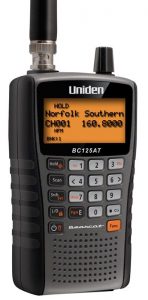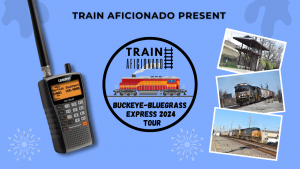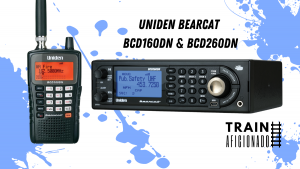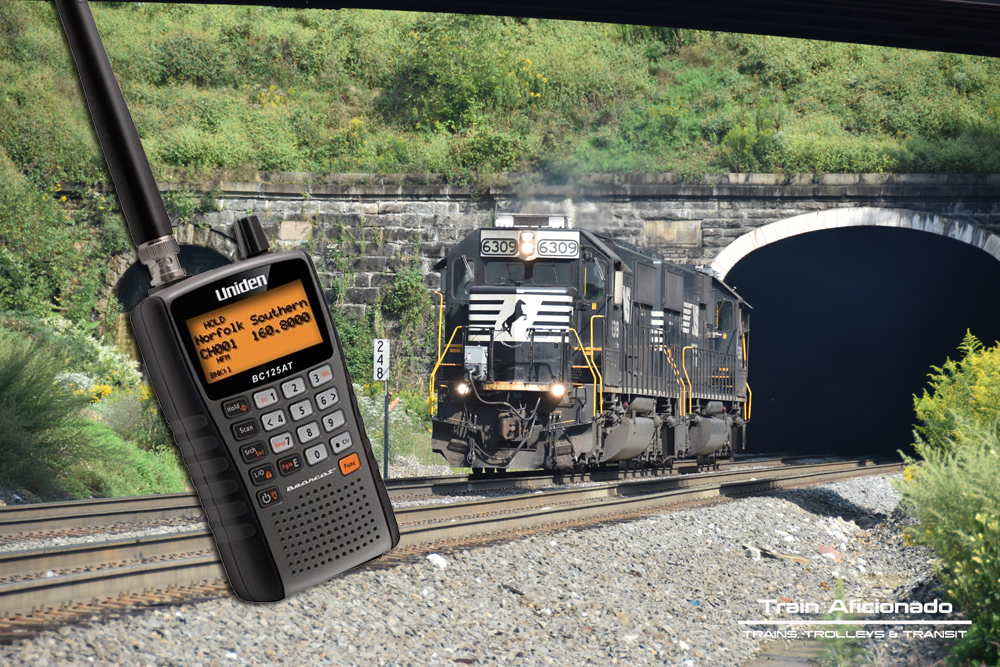
A scanner is a valuable tool when railfanning and here is why. There is no way to tell when the next train is coming unless you are monitoring ATCS (Advanced Train Control System). ATCS is a digital display of a railroad line showing where the trains are. In a perfect world, it would be great to see that for every railroad line. Now that we have covered ATCS a scanner is the next best thing for tracking trains along your local railroad lines.
Where to start?
A basic analog scanner would work fine to monitor your local railroad line. Railroads broadcast on the 159.8100 – 161.6100 MHz. Normally a basic scanner will cost about $100. I would also recommend a rubber duck antenna tuned to the VHF frequency band to get the best reception.
Are the railroads going digital?
Right now analog is the primary type of communication of the railroads. The digital switchover will be several years off and will take a team effort by all railroad carriers and passenger providers. Digital NXDN may be used for some yards or short line operations but 99% are still using analog.
Programming
I would strongly recommend using RadioReference.com to get the local railroad frequencies. You will see larger railroads like CSX, BNSF, Norfolk Southern, and Union Pacific have their lines broken into districts and subdivisions. So be sure you have the right Road and Dispatch channels programmed into your scanner. If you are going to be railfanning near a yard be sure to program any yard channels. Most scanners do have a programmed railroad service search to find additional area frequencies.
Why do I only hear the dispatcher and not always the train?
Railroads use what we call line-of-sight communications which means a scanner listener will hear the train crew when they are anywhere from 5 to 10 miles away. Line-of-sight reception is based on the radio transmit power. The dispatcher can often be heard because they are transiting off tower sites along the right of way. These tower sites have the ability to listen to the train crews this is called a receive site.
Quiet vs talkative
This is dependent on the traffic on a given railroad line. The busier the line the more radio communication you will hear as the dispatcher tries to keep freight and passenger trains moving on time. Other lines that might have one or two trains may still have valuable information that can be heard over the scanner such as Defect Detectors, Train Telemetry, and engineer call outs.
Wayside Defect Detectors
These are automated voice detection systems that will alert a train crew of any problems on board the passing train.
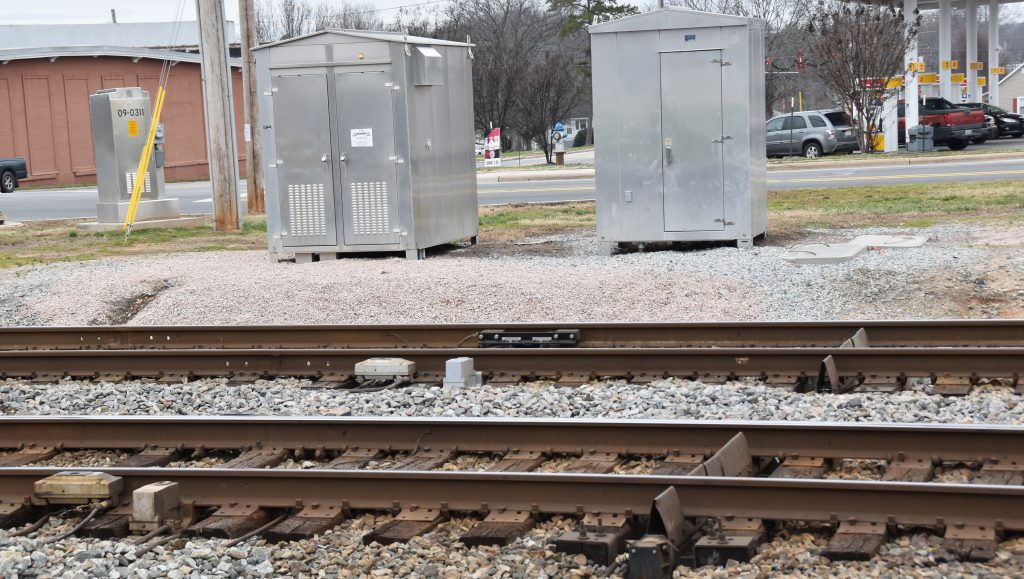
Following problems may be heard:
- Hot Wheel
- Dragging Equipment
- Car Height
- Wide-Load
- Shifted load
- Hotbox
Once familiar with the milepost and defect detectors along the line this will be a great tool to know if a train is coming. Normally these defect detectors are heard on the road channel. These automated broadcasts can be heard up to 2 to 6 miles from the transit site.
Here is an example of a typical automated message:
“CSX Equipment Defect Detector Milepost 123.4 No Defects (Repeat) No Defects. Total Axle 621. Track 1. Temperature 63. Detector Out.”
Please note you will not here this automated message until the train has fully cleared the detector.
Video by Mark Clay McGowan on How Wayside Detectors Work
Programming Train Telemetry
Along with programming, the local railroad frequencies be sure to program Head of Train (HOT) 452.9375 MHz and End of Train (EOT) 457.9375 MHz. These frequencies transmit low power signals that put out a data burst from the train’s onboard HOT and EOT devices. Monitoring these channels the listener will know when the train is near their vicinity. It will sound like a little chirp.
Engineer calling out locations?
On some railroad lines, you will hear the engineer call out key locations along a route on the road channel. Oftentimes these are business references along the route, cities/town names, or even key milepost locations.
Emergency, Emergency
This is never a good thing to hear on the scanner. The engineer has stopped the train due to a problem, which could be derailment, hitting something on the right-of-way or a problem with onboard equipment.
Looking to buy a scanner?
I would strongly recommend the analog Uniden Bearcat BC125AT Handheld scanner. This scanner is simple to program through the keypad. You can even program alpha tags that will give a brief description of the frequency programmed. This scanner even has a railroad service search to find unknown frequencies.
